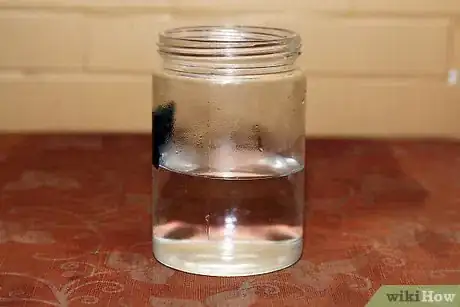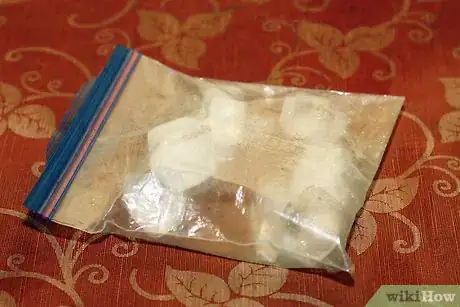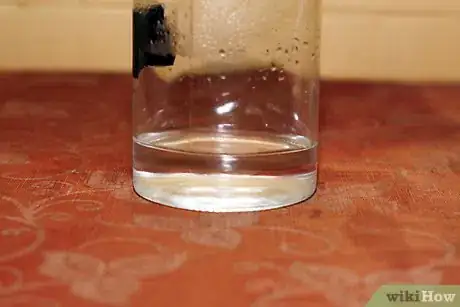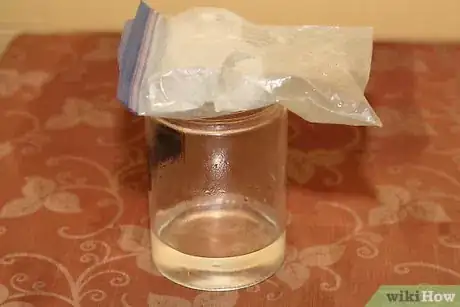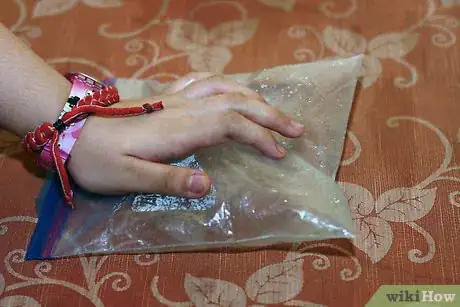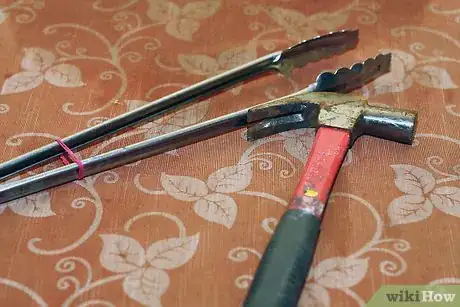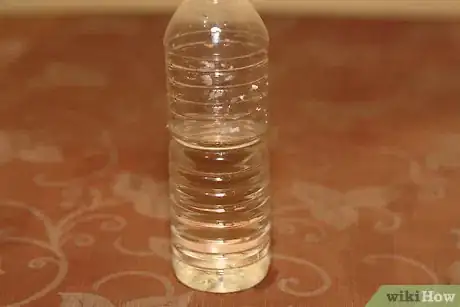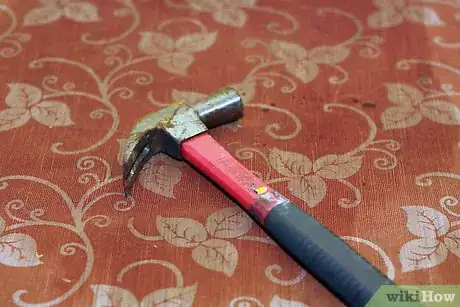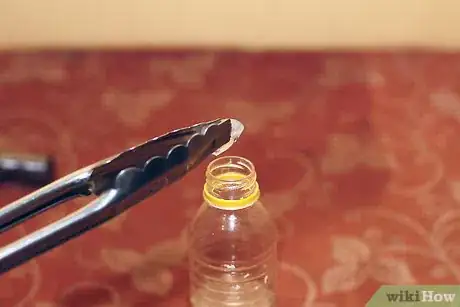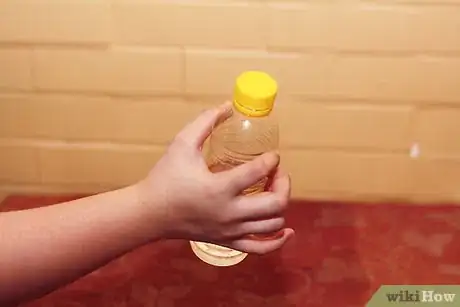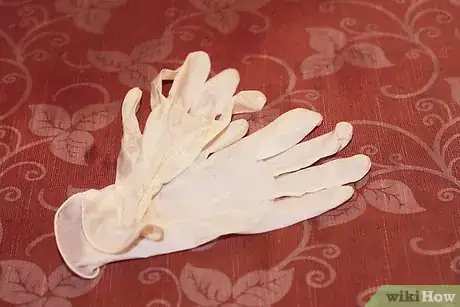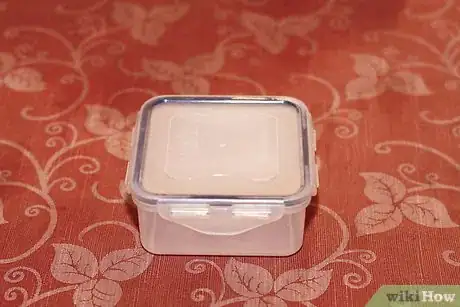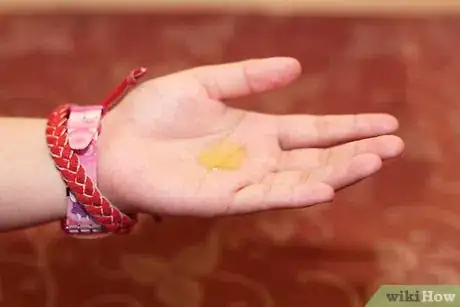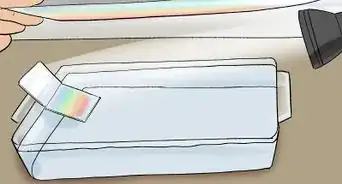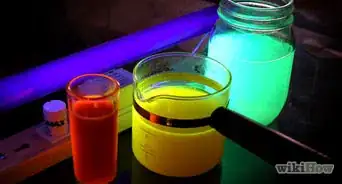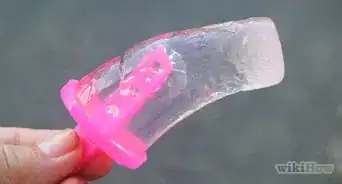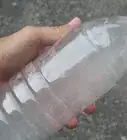This article was co-authored by Meredith Juncker, PhD. Meredith Juncker is a PhD candidate in Biochemistry and Molecular Biology at Louisiana State University Health Sciences Center. Her studies are focused on proteins and neurodegenerative diseases.
This article has been viewed 259,058 times.
Fog in a bottle is a fun science experiment you can do in your own home. Fog is created when water vapor condenses, forming a haze of tiny water droplets in the air. By mixing warm water with ice or dry ice, you can cause that process to occur in a bottle. Fog in a bottle is a fairly simple, fun experiment. However, take certain precautions, especially when handling dry ice. You'll need to use protective gloves and have an adult supervise.
Steps
Using Ice Cubes and Hot Water
-
1Fill a bottle with warm water and set it aside for a minute. The safest way to make fog in a bottle is to simply use ice cubes and warm water. To start, fill a bottle with warm water. The water does not need to be boiling. Just try to run tap water as hot as it goes. Fill the bottle to a little below the brim and set the bottle aside for 60 seconds.[1]
- Fog is formed when warm water vapor comes into contact with cold temperatures. By heating up the inside of the bottle with hot water, you are creating warm vapor inside the bottle.[2]
-
2Fill a plastic bag or strainer with ice cubes. While you're letting the bottle sit, prepare your ice. Take some ice cubes from the fridge and place them in a plastic bag or a strainer. Whether you use a bag or strainer depends on the container you're using for your project.
- Some people use jars instead of bottles for this experiment. If you're using a jar, it's a good idea to set the ice in a strainer, which you should be able to find at a grocery store. The strainer's circular shape makes it fit more easily over a jar.[3]
- A strainer may not fit easily over the smaller opening in, say, an empty soda bottle. A plastic bag, which is more soft and flexible, can sink slightly into the bottle. This will cover the opening completely. Use a plastic bag if you're using a bottle.
Advertisement -
3Pour out all but 1 inch (2.5 cm) of the water in the bottle. Once 60 seconds have passed, pour most of the water out of the bottle. Leave about 1 inch (2.5 cm) of water on the bottom of the bottle.[4]
- Now, the air inside the bottle is warm. When it's exposed to the cool temperatures caused by the ice cubes, fog will form inside the bottle.[5]
-
4Cover the bottle with the ice cubes. Take the plastic bag or strainer. Place it over the covering of your bottle or jar. In a few seconds, you should expect to see fog form inside the bottle.[6]
- A strainer should fit fairly easily over a jar. However, a plastic bag may need to be secured. If your bag slips off the bottle, try to secure it with a few pieces of duct tape.
-
5Troubleshoot any issues. In the event fog does not form, review your process. It's possible the opening of the bottle is not completely covered, preventing the cold air from the ice cubes from interacting with the warm water vapor in the bottle. You also may not have gotten the water hot enough to cause fog. Try repeating the process, using hotter water and a bigger bag or strainer.
Trying Dry Ice
-
1Buy some dry ice. You can make more intense fog by using dry ice (solid carbon dioxide). Dry ice can be purchased in large bags at most supermarkets or drug stores. However, you need to be at least 18 to legally purchase dry ice. You do not need a lot of dry ice, so go for the smallest bag you can find.
- If you're younger than 18, you'll have to have an adult purchase dry ice for you. In general, it's a good idea to have adult supervision when using dry ice as the substance can be dangerous when handled improperly.
-
2Gather your other supplies. This process is a little trickier than using water ice, and there is some potential danger when handling dry ice. Before you start, make sure you have all your supplies together. In addition to dry ice, you will need:
- A plastic bottle. Any bottle, like an empty soda or water bottle, will work. Avoid using a jar when using dry ice, as you'll need a smaller opening for the experiment to be effective.
- Thick gloves and tongs. Dry ice is very cold and can cause severe burns if handled by bare hands.
- A hammer to break the dry ice into chunks.
-
3Add warm water to your bottle. Fill a plastic bottle about 1/4 of the way full with warm water. You do not need to use boiling water. Just run tap water as warm as it gets for the project to be effective.
-
4Break the dry ice into small chunks with your hammer. Make sure you wear gloves and a long-sleeved shirt to avoid coming into direct contact with your dry ice. If you're younger, it's a good idea to have an adult break up the dry ice for you.
-
5Add the dry ice to your bottle using tongs. Once you've broken the dry ice into chunks, use your tongs to add a few chunks of dry ice to the bottle. You should not need to add more than 1 or 2 pieces of dry ice before a thick fog begins to form in your bottle.
-
6Play with your fog in a bottle. Once your fog has formed, you can play with your fog in a bottle. Squeeze the bottle gently, causing small circles of fog to puff out of the bottle. If the fog starts to die down, add another chunk of dry ice.
- Be careful when playing with your bottle. You do not want to accidentally spill or drop it. It's a good idea to keep protective gloves on when squeezing the bottle.
- If the water gets too cold, you can pour the bottle's contents down the sink. Then, add warm water and repeat the process.
- Never cover your bottle. If dry ice is put in a sealed container, gas will build up until the container explodes.
Taking Precautions
-
1Use protective gloves when handling dry ice. Dry ice is extremely dangerous to handle with your bare hands. As dry ice exists at very low temperatures, as low as -109° Fahrenheit (-78.5° Celsius), it is very harmful to the skin. Extreme burns can result from touching dry ice with bare hands. Always use protective gloves when handling dry ice. You should wear cloth or leather gloves to protect your skin. An oven mitt would also effectively protect you from dry ice.[7]
-
2Use and store dry ice in a well-ventilated area. While the carbon dioxide vapor from dry ice isn’t toxic, it can throw off the air’s oxygen content in an enclosed space and make it hard for you to breathe.[8] It can be dangerous to use or store dry ice in a small, closed off space like a cellar or car.[9]
- The vapor from dry ice tends to sink and settle close to the floor, which can be dangerous for small children or pets. This is less of a problem in well-ventilated areas.
-
3Store dry ice carefully. You will probably not use all of your dry ice in a single science experiment. Make sure you store the dry ice properly when you're done making fog in a bottle.
- Store dry ice in an insulated container that is not completely airtight. As stated previously, an airtight container will cause dry ice to explode.[10]
- Do not store dry ice in a freezer or fridge. This will result in the thermostat in your freezer/fridge dropping to the point the fridge turns off.[11]
- Keep your dry ice in a well-ventilated space.
-
4Treat burns quickly. During the process of making fog in a bottle, you may get burned by the hot water or dry ice. Most burns can be treated at home. Run the burn under cool water for about 10 to 15 minutes, or as long as it takes for the pain to ease. Then, do some follow up care.[12]
- Remove any items, like rings, from the burned area. If you have any blisters, avoid breaking them. In the event they break on their own, clean the area with water and mild soap.[13]
- Add some aloe vera gel to help keep the area from drying out. You can try an over-the-counter pain medication, like ibuprofen, if the pain is severe.[14]
Community Q&A
-
QuestionIs it safe to use dry ice for an indoor party to create a smoke-like scene?
 Kittycat7Community AnswerIt depends. If you keep the dry ice safely in jars or cups, there is less of a chance of injury. However the effect would most likely not be very exciting in such small containers. This is most likely not the best idea for a smoke scene, especially at a party.
Kittycat7Community AnswerIt depends. If you keep the dry ice safely in jars or cups, there is less of a chance of injury. However the effect would most likely not be very exciting in such small containers. This is most likely not the best idea for a smoke scene, especially at a party.
Warnings
- Keep your supplies out of the reach of young children and animals.⧼thumbs_response⧽
- It's a good idea to ask for adult supervision when working with dry ice. Dry ice is relatively safe when you take proper precautions. An adult may be able to make sure you handle the material in a safe fashion.⧼thumbs_response⧽
Things You’ll Need
Using Ice Cubes and Hot Water
- A bottle or jar
- A strainer or plastic bag
- Warm water
- Ice cubes
Trying Dry Ice
- Dry ice
- A plastic bottle
- Tongs
- Protective gloves
- A hammer
- Warm water
Taking Precautions
- Protective gloves
- An insulated (but not air-tight) container
- A well-ventilated space
- Aloe vera and over-the-counter pain medication in case of burns
References
- ↑ http://www.weatherwizkids.com/experiments-fog.htm
- ↑ http://www.planet-science.com/categories/under-11s/our-world/2011/06/fog-in-a-bottle.aspx
- ↑ http://www.weatherwizkids.com/experiments-fog.htm
- ↑ http://www.weatherwizkids.com/experiments-fog.htm
- ↑ http://www.planet-science.com/categories/under-11s/our-world/2011/06/fog-in-a-bottle.aspx
- ↑ http://www.whatdowedoallday.com/2009/10/fog-in-a-bottle-unplugged-project-weather.html
- ↑ http://dryiceinfo.com/safe.htm
- ↑ https://www.health.ny.gov/publications/7081/index.htm
- ↑ http://dryiceinfo.com/safe.htm
- ↑ http://dryiceinfo.com/safe.htm
- ↑ http://dryiceinfo.com/safe.htm
- ↑ http://www.mayoclinic.org/diseases-conditions/burns/basics/lifestyle-home-remedies/con-20035028
- ↑ http://www.mayoclinic.org/diseases-conditions/burns/basics/lifestyle-home-remedies/con-20035028
- ↑ http://www.mayoclinic.org/diseases-conditions/burns/basics/lifestyle-home-remedies/con-20035028
